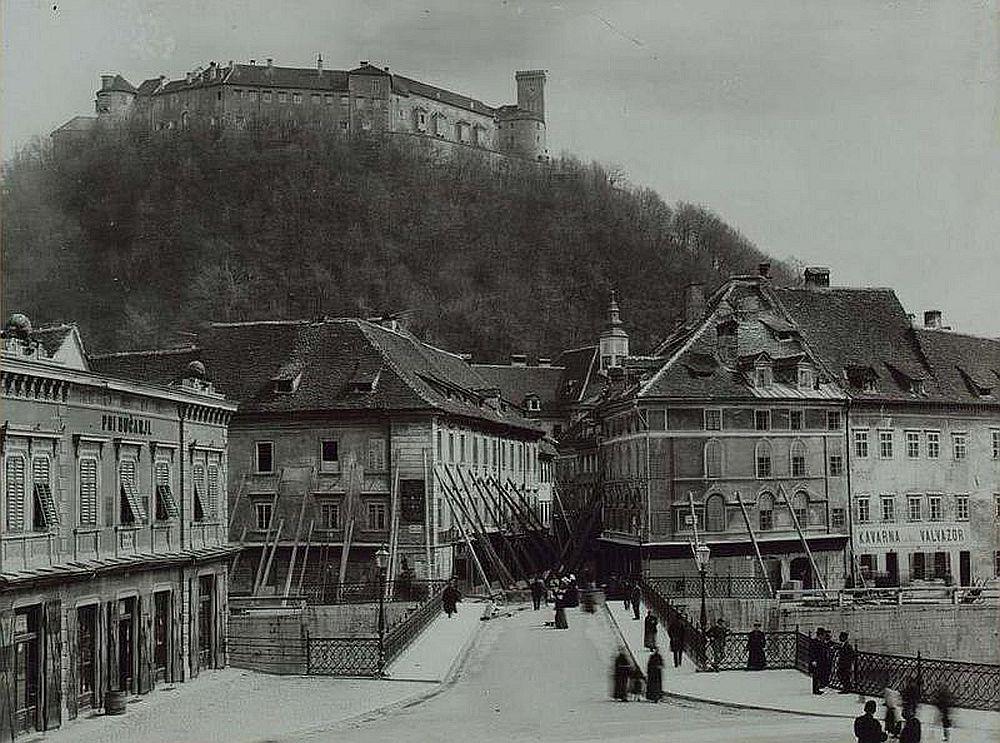April 14, 1885, was a big day for the citizens of Ljubljana. It was Easter Sunday, one of the most important holidays of the Christian year. By 11 P.M., most of the city was asleep after a day spent in church, at the family table and, in many cases, on trips to the Slovenian countryside. Just a few moments later, both their lives and the future of the city they called home would change in a way few could have ever imagined.
At 11:17, a mysterious rumble arrived from the south and the shaking began. Walls cracked, windows shattered, and roofs began to collapse. Some thought that the end of the world had arrived. Others realized that they were in the midst of an earthquake and fled from their homes.
Thousands of families filled the city’s parks. With aftershocks occurring at regular intervals, few dared to return to their homes, even if they were still standing. Soon, the streets were filled with police, fire crews, and troops called in to restore order.
Morning revealed the extent of the damage. Many buildings, including several in the very center of the city, had collapsed. A number of homes were left uninhabitable, and huge cracks rendered the fate of others uncertain. According to a report in the Chicago Tribune, “not a single house escaped without damage.” Given the destruction, the total death toll was low, with seven fatalities reported in Ljubljana and surrounding areas. Many more were injured, often by collapsing chimneys.
In the weeks and months to come, the people of Ljubljana continued to spend their nights in parks and other public spaces. Authorities constructed makeshift housing for some the displaced, while others slept in tents or even buggies. Fears of a cholera outbreak were widespread. Experts went from building to building assessing the damage and checking the structures’ stability before allowing some of the people back into their homes. Massive support beams appeared throughout the city, preventing badly damaged facades from crashing onto the streets below. A German newspaper even dubbed Ljubljana a “supported city.”
Normal life eventually returned to Ljubljana, but the earthquake changed its appearance forever. The catastrophe gave the town’s mayor, Ivan Hribar, a chance to turn a provincial Austrian town of 30,000 – described by Frankfurter Zeitung as simultaneously a large village and “small, poor, old, provincial town” --, into a city that finally reflected its status as the Slovenian national capital. Architect Maks Fabiani, who worked in Vienna at the time, developed an urban plan to the city, beginning an unprecedented wave of new construction. In the fifteen years after the quake, more than 400 new buildings were constructed in the city. The collapsed buildings were replaced by magnificent art nouveau places that brought some of the glamour of Vienna to the provincial streets of Ljubljana. The new Grand Hotel Union became one of the most modern hotels in the region, and it attracts tourists to this day. New bridges, monuments, and parks were built throughout the city. Some of the changes were more difficult to see but just as important: The post-earthquake era saw major reforms in public services, from health to education.
The 1895 earthquake was a tragedy for many of Ljubljana’s residents. However, it also gave the city’s political leadership a chance to transform a small provincial town into a national capital. Ivan Hribar and his team seized the opportunity, and created a vibrant, modern city that ultimately gave the Slovenian nation the confidence to embark on its long journey towards national self-determination.


































































